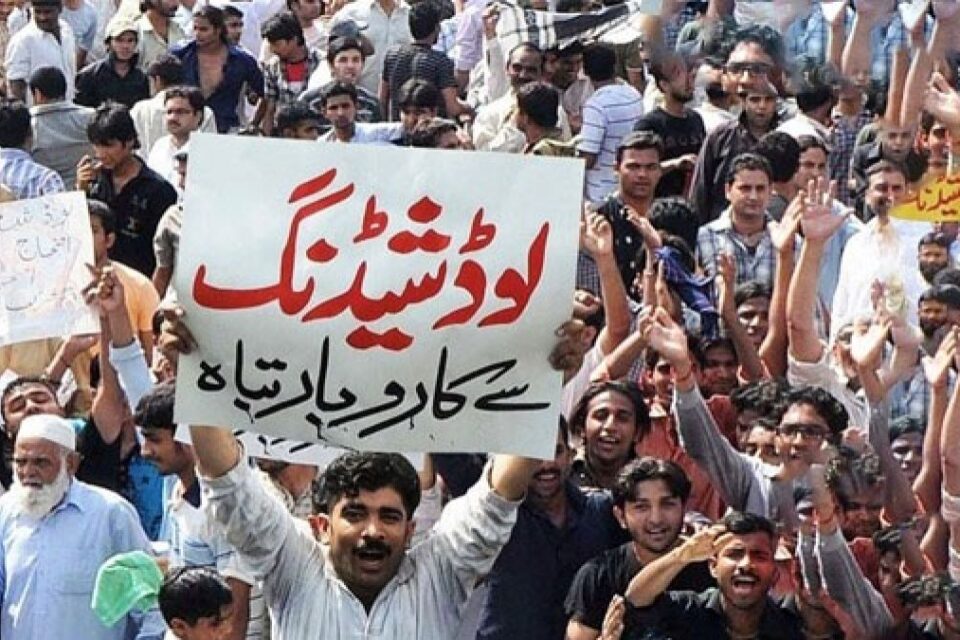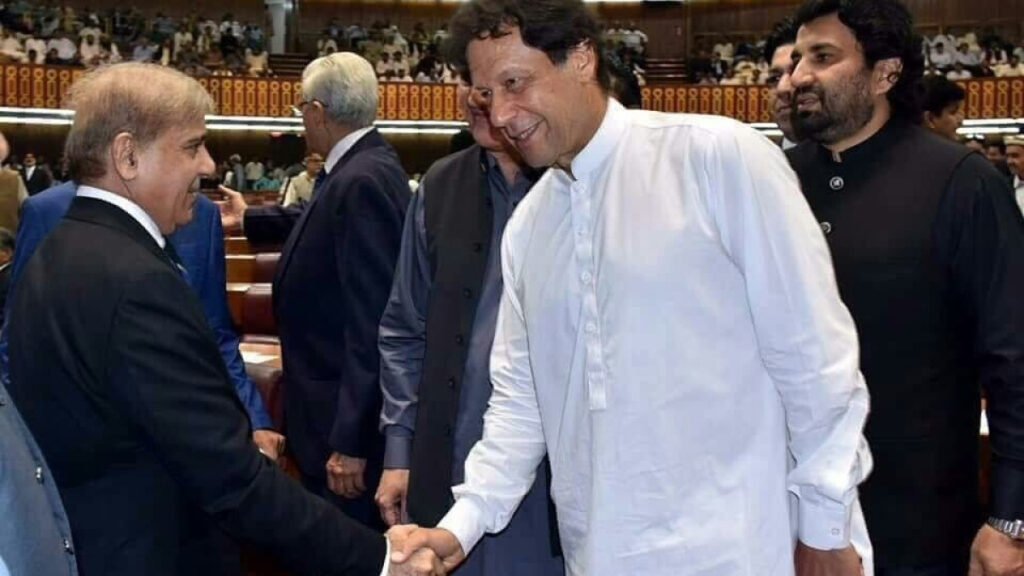Can Pakistan be saved?
Posted On January , 2023


Image courtesy by oneindia
Pakistan – a country which is drowning in skyrocketing inflation, mounting debts, hunger, poverty and rapidly exhausting foreign reserves – could see its economy completely crash and hit rock bottom soon. The question then arises, what led to this acute downfall and who is responsible?
Over 200 million Pakistani citizens have been left devastated because of the current crises that have engulfed the South Asian country, with no end in sight as the political situation remains dire.
A few days ago, the nation’s economic crisis became obvious when news about a nationwide power outage made headlines after the overburdened electrical system collapsed on 23 January.
This nationwide blackout was seen in major cities including Karachi, Lahore, Islamabad and Peshawar.
Even though power was restored across cities entirely by Tuesday, many hospitals, factories and schools were not able to operate without power. Pakistani citizens were also not able to use their mobile phones or the internet.
What’s dreadful is that this is not the first time something like this has happened in the country. A mass power outage also took place in October last year, causing disruption to the lives of many people as well as essential businesses. This has become common over the last few years.
So, what has been causing such power outages? According to a media source, even though Pakistan has available power capacity to meet the requirement, its oil-and-gas industry is heavily in debt. The situation is so bad that it cannot afford to put money into setting up new infrastructure and power lines.
Energy minister Khurram Dastgir, however, seemed to point towards another reason behind the power outages. He is quoted by a report to have said, “We are considerate of the electricity bills people have to pay and try not to unnecessarily use power plants that require a lot of energy.”
In an address to the nation following the blackout, Dastgir also said that the transmission system was not affected.
According to reports, many officials have blamed the issue on the country’s dwindling power transmission system which needs to be reformed. However, Pakistan is also facing other problems involving hunger and inflation which have diverted the attention of the government from doing what is needed when it comes to revamping the aging infrastructure.
The Asian Connect conducted polls on all our social media pages to get an idea of how British Pakistanis feel about this. In one poll where we asked our readers if they think there’s a solution to the current economic crisis that Pakistan is facing, 100 per cent of the users on Twitter felt that there was none.
While on LinkedIn, 50 per cent of the respondents felt that there is a solution and the other 50 per cent did not, and on Instagram we received the same response from our readers, with one pointing out that the country’s leaders need to unite for it to come out of the mess.
This goes on to show that currently many, including those living abroad, have lost their confidence in a bright future for the country, given the lack of foreign reserves and other factors that have gripped the nation by its neck. The solution to all these hurdles is also not easy to achieve due to mounting debts and lack of trust from other nations around the world.

Pakistan’s PM Shehbaz Sharif with former PM Imran Khan (Image source: Twitter)
In another poll where we asked our readers whether they think that the UN or other countries could provide necessary help to Pakistan, the answer echoed a similar negative sentiment across platforms with the majority expressing their lack of faith in these entities being able to step up and bring it out of such a critical period.
Another pertinent question that arises is – who can be held responsible for Pakistan’s severe setback? According to an article by Aqil Sajjad on Scroll, “Any government giving Pakistan a high growth, low inflation and stable Pakistani rupee story without reforms, and without earning enough dollars to cover our imports, is selling us snake oil which will inevitably end in pain.”
Pakistan has seen several governments after Parvez Musharraf tendered his resignation in 2008. Each of these governments inherited “severe external crises”, Sajjad writes. However, the ones which had to face less challenges whilst in power, did not bother to make any reforms as they hid behind the glitz of low inflation and a stable economy.
Apart from this, worsening foreign debt has made the people of the country lose hope in other states being able to provide support, as our polls have revealed. Pakistan’s foreign reserves have shrunk to $10 million. The plummeting growth rate due to the inability of the country to generate enough money to keep up with the imports has led to more external borrowing, consequently depleting foreign reserves and crashing the economy.
Additionally, the GDP growth rate has also significantly been projected by the UN to fall to 2 per cent as a result of several obstacles including Covid-19, floods and the Russia-Ukraine war, which have had a huge impact on the country.
Inflation is another reason for Pakistan’s woes as it has increased by 24.5 per cent leading to many citizens not being able to afford basic amenities such as food, fuel and electricity. As a result, the government has also decided to shut markets, restaurants and wedding halls earlier than usual to save energy.
The economic crisis in Pakistan has been at the center of the political rivalry between former PM Imran Khan and his successor Shehbaz Sharif, as well as their parties, leading to an unstable political structure that has led to a lot of disruption in the nation.
According to Economic Times, “In addition to the political protests and demonstrations in Islamabad, there have been violent ethnic clashes in Sindh and popular protests in Baluchistan and Pakistan occupied Jammu and Kashmir (PoJK).” This has led to a diversion of focus from pertinent issues that have been haunting the country.
Although there are many factors at play, it can be said that the current as well as the previous governments are to be blamed for not bringing about radical changes and reforms when they had the chance to do so; and at present they continue stray from their path when the country’s citizens need them to figure out a solution, to fulfill their own political agendas.
So, what can Pakistan do to emerge out of the darkness? As the IMF makes it harder for Pakistan to be able to take any more loans, according to Outlook, it “has no choice but to accept the tough IMF conditions in order to restore the financial agency’s programme to avert an economic default”.
Additionally, the government needs to introduce new economic reforms to “reduce high trade and current account deficits” that “would require major cutbacks in expenditures and imports”. The country’s political parties also need to come together and find unity in times of adversity to be able to focus on finding a way out of the turmoil.
Given all the impediments that it faces, only time will tell if the leaders of Pakistan will wake up and do something to change the trajectory of a nation drowning in debt and poverty in the positive direction; or if the citizens will have to fight against the regime for a better future.

By providing your details you agree that you wish to receive a regular newsletter and other marketing communications from us. Our newsletter and marketing communications will normally be sent by email. You can unsubscribe at any time by emailing us. Your personal data will be used in accordance with our privacy policy.
